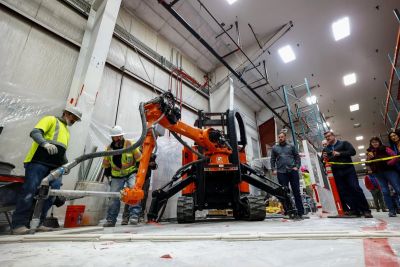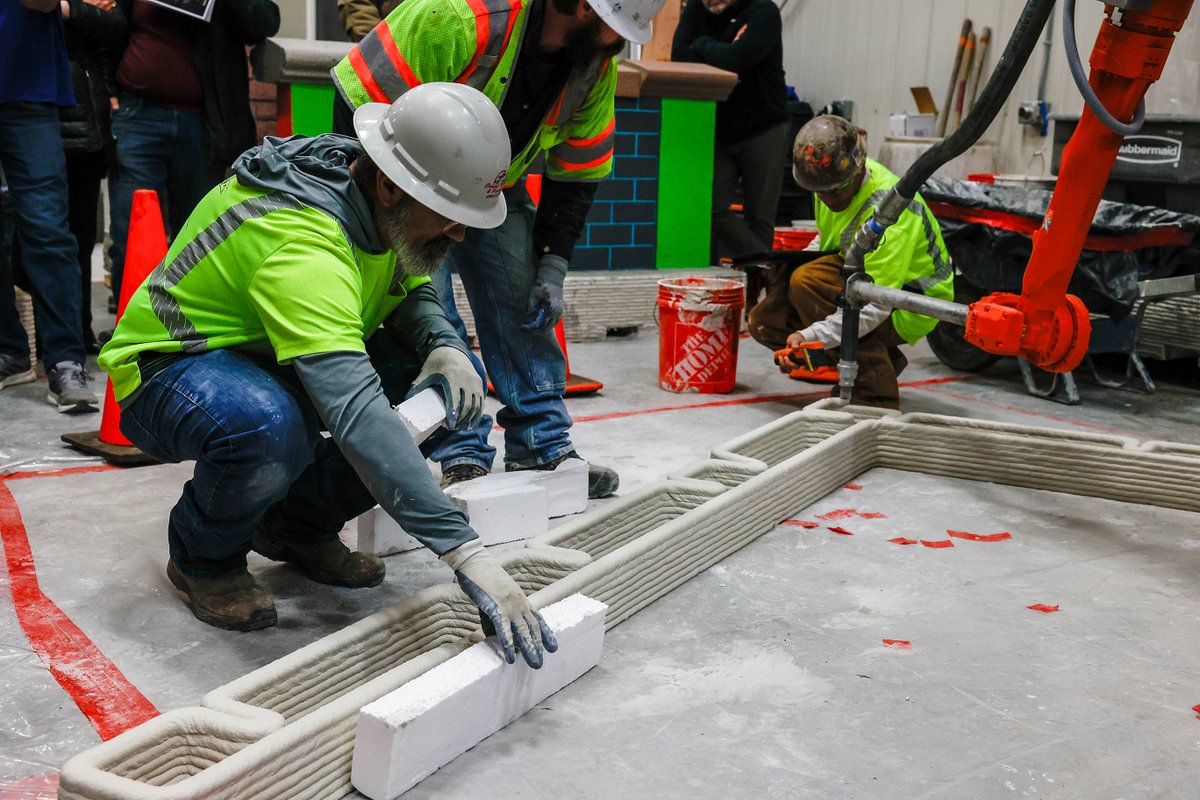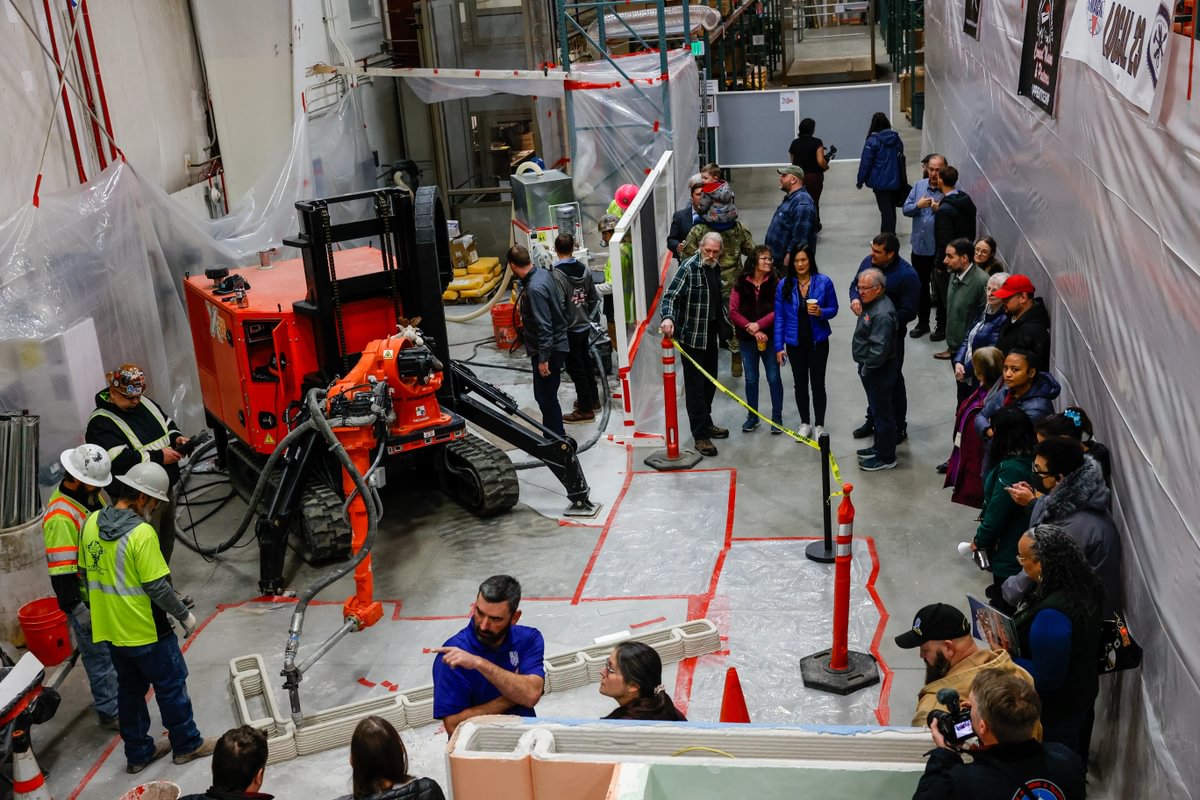Discovering Innovation

3D Modeling May Offer Rural Alaska A New Take On Affordable Housing
Nationwide, building industry experts are exploring the potential benefits of 3D printed homes, putting this innovative technology to the test to see if it can be used to help address a housing affordability crisis.
Rising construction costs are prevalent across the country and are particularly challenging in Alaska where they are coupled with limited access to suitable building land, a short building season and difficulty accessing materials. Some believe that 3D printed homes could be an innovative way to redefine and develop new industrialized construction methods that offer solutions for building quality, affordable and resilient homes.
Alaska Housing Finance Corporation has been partnering with others who are investigating this innovative concept and testing its viability against Alaska’s severe weather patterns. In particular, AHFC’s Research and Rural Development team has for several years been sharing information with its partners at Cold Climate Housing Research Center, National Renewable Energy Laboratory, Xtreme Habitats Institute and Denali Commission.
Currently, there are several research projects in motion intended to evaluate how a 3D printed home performs in cold climates. The intent is to identify if such a product can withstand Alaska’s harsh winters of wind, snow, rain and extreme temperature swings.
- In the summer of 2024, AHFC supported a prototype structure printed in Fairbanks to be tested for thermal leakage, among other things, and monitored throughout the winter.
- Students and researchers at the University of Alaska will continue to refine, test and design protocols for the mobile printer. One of the key goals of this construction project is to use sustainable local resources for the construction material.
- The City of Nome received funding from the U.S. Department of Housing and Urban Development and the Denali Commission to build a 3D printed home that is being monitored and tested by NREL during the winter of 2025.
- The project team, including partners Xtreme Habitats Institute and Penn State University, are conducting the design, engineering, materials research, development, planning and analysis required to 3D print high-quality, affordable, energy-efficient and sustainable housing for communities in sub-arctic regions of Alaska.
In the case of both Alaska prototype projects, summative reports will be published to share findings with the general public, regional community entities and local governments where there may be interest in pursuing future developments.

AHFC, along with cement masons from Local 528 of Alaska and XHI, hosted a week-long 3D printing demonstration at AHFC’s newly acquired warehouse, 700 Bragaw, in Anchorage. The two-story building includes classroom areas and hands-on fabrication and mechanical training workspaces for AHFC maintenance employees.
A Potential New Building Era
“Embracing new ideas and the possible benefits of this technology could be impactful for so many of Alaska’s communities, especially in rural areas where the building season is particularly challenging,” says Jimmy Ord, Research and Rural Development director, AHFC.
Ord also notes a cautious optimism, “Fast-tracking innovations such as 3D modeling will only be successful if local knowledge is incorporated, and no one expects an overnight improvement. This is about playing the long game and applying lessons learned as it makes sense.”
Cities worldwide from New York to London, Berlin to Shanghai, are launching 3D modeling projects with the hope of creating powerful new tools to interact with challenging building environments. Much work remains to refine these technologies and bring these new construction methods to scale. Preliminary benefits appear to be significant including:
- Speed and Efficiency - 3D printing reduces construction time, with some houses being built in a matter of days or weeks rather than months or years with traditional methods.
- Cost Reduction - The automated nature of 3D printing can lower labor costs and the technology can potentially reduce material waste, leading to overall cost savings.
- Design Flexibility - 3D printing allows for complex and customized designs that are difficult or impossible to achieve with traditional construction techniques.
- Sustainability - 3D printing can contribute to more sustainable construction practices by reducing material waste and potentially allowing for the use of locally sourced materials.
- Durability and Strength - 3D printed structures, particularly those using concrete, can be highly durable and resistant to fire and wind damage.
- Energy Efficiency - 3D printing can contribute to energy-efficient homes through optimized insulation and design features.
- Labor Efficiency - 3D printing reduces the need for a large workforce and the associated costs.
- Accessibility - 3D printing can make housing more accessible, especially in remote areas or disaster-stricken zones, where traditional construction methods are difficult or expensive.
Test model 3D printed homes developed in Virginia and Texas achieved a better Home Energy Rating Standard score than previously achieved when building traditional housing. Other states recording post construction monitoring show humidity conditions in 3D printed homes do not appear to be an issue.
Adds Ord, “Thinking bigger, bolder and out-of-the-box is the path for building and boosting the supply of affordable homes. 3D modeling is an exciting representation of this new frontier. There are many questions still to be answered about applying this technology in Alaska. How and where might materials be sourced locally to cut back on the significant shipping and logistical challenges that homebuilders face, especially in our most remote, rural communities? That’s the million dollar question.”

More than 100 people, including real estate professionals, civil engineers and others from the building industry, attended a live 3D modeling demonstration during the week of Feb. 24, 2025. Attendees learned about the potential use of this technology to address housing construction needs in Alaska.
Visit ahfc.us/efficiency to learn more about AHFC's Research and Rural Development department.
![Alaska Housing Finance Corporation [Logo]](/application/themes/ahf2/images/logo.png?v=2)